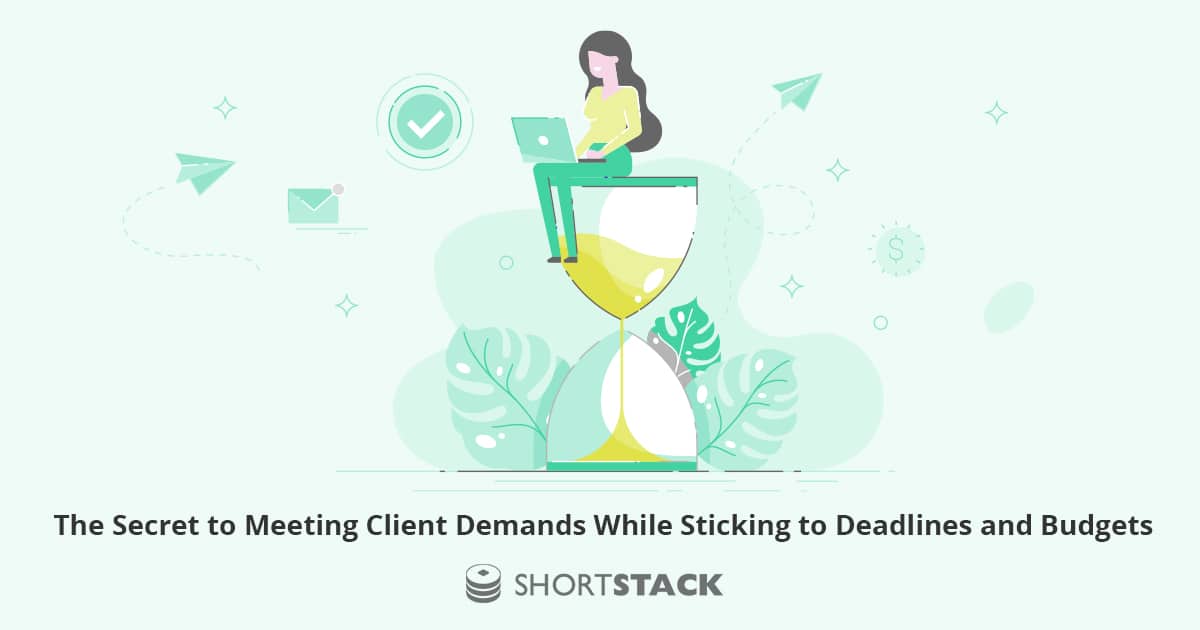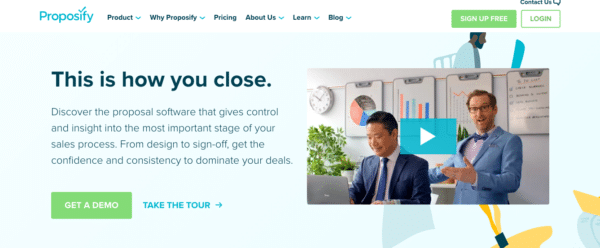The Secret to Meeting Client Demands While Sticking to Deadlines and Budgets

Learn how to meet client demands while sticking to deadlines and staying under budget by setting clear expectations and effective communication.
Sometimes it feels like you can’t win…Your team is working themselves to the bone to keep your clients happy, but they keep asking for more. And more. And more.It’s the hamster wheel of agency life, leading to burnout, disenfranchised employees, and unhappy clients.Working all night to satisfy your clients' demands is unsustainable.So what’s the secret? How do you meet client demands while sticking to deadlines and staying under budget? How do you keep your sanity as your agency grows?It starts well before a client has signed an agreement, so let’s begin there...
The Sales Conversation
Setting expectations during the sales process is critical for setting up a new client engagement for success.Unfortunately, most true expectations are left unsaid - you end up chasing an outcome misaligned with your client's desires.I don't doubt your intentions. Agencies with the greatest intentions can end up in a world of hurt thanks to poor communication and unspoken expectations.All I’m suggesting is that you need a definition of success that both you and your client are crystal clear about. There can’t be any grey area.You can’t assume that every client cares about the same things. You need to ask them and probe until you have an answer that you believe in.Ask a question like:“If we were meeting a year from now, how would you know this had been a good investment?”But don’t stop there. Get into the numbers. What does that “feeling” they’re searching for actually mean in traffic, leads, sales, and any other key metrics they care about?Quantifying a client’s desires and expectations gives you hard evidence to refer back to. It also enables you to push back on their expectations prior to starting work. And yes, you should push back. The last thing you want to do is bite off more than you can chew and over-promise on deliverables. If you can’t get the results they’re asking for without working 24 hours a day, don’t promise them.In the end, you’re looking for the client to articulate and agree to a set of outcomes and expectations that you know you can deliver. Document it. Send it to them in your official proposal. Put it in an email. The more you can reinforce the agreed outcomes and get multiple points of commitment from the client, the better chance you have of delivering on their expectations without missing deadlines or going over budget.As well as “results,” you should also set expectations for the scope of work, lead times, team and client accountability, communication channels, and any other things that could cause bottlenecks during the engagement.Be sure that you have verbal and written commitments from all of the key decision-makers, too. Leave no stone unturned.I recommend using an online proposal tool for capturing client commitment and outlining the deliverables for the relationship. Proposify is one example:

Agency Proposals with Proposify
Delivery
Without a doubt, the sales conversation is the most important part of meeting the demands of your clients. Simply because you are realigning their expectations to a path that you are confident you can follow. If you over-promise just to get a client to sign an agreement, that’s when you’ll feel the heat during an engagement.But once the work is underway, you still need to do numerous things to keep a client's expectations within your realm of influence.Here are some tips for keeping the agreed boundaries of the sales conversation intact once you start delivering:
- Earn trust in the first 90 days. The onboarding phase of a new agency-client relationship is critical to its long-term success. Your new client is looking for reinforcement that they made the right decision to work with you. It’s up to you and your team to earn their trust with robust communication, structured plans, sticking to deadlines, and getting some early results.
- Build bulletproof processes. As well as earning trust in the onboarding phase of a new client relationship, you need to establish processes for client approval, output delivery, reporting, quality control, and team accountability. It would be best if you had your workflows and processes documented so you can quickly adapt them to a new client and keep them informed at every step of the journey. Tools like Trello and Confluence can help with process documentation:

Process Documentation with Confluence
- Over-deliver. It may sound simplistic, but the goal should be to deliver results so that clients never question the budget they contribute to your agency. If you have accurately quantified what the client cares about during the sales discussion, then over-delivering becomes a lot easier. You should only ever commit to deliver results that align with your experience and ability.
- Communicate effectively. Effective communication results in higher productivity, improved client outcomes, and long-term retention. Communication is much more than just video conferences, phone calls, and email chains - it’s every interaction you have with a client or your team. It would help if you created rules for communication so that the important things get the attention they need, and the not-so-important things are kept in channels that don't interrupt a day's work. Slack is the perfect communication partner for day-to-day interactions:

Team Communication with SlackYou know as well as I do that client work can get messy with 11th-hour changes or urgent campaign deliverables. But you can reduce the effect of that messiness with sharp onboarding that earns trust, robust processes, strong performance metrics, and effective communication.
Reporting and Transparency
Transparent reporting is the foundation of client retention and reinforcing the value you are adding.The goal of reporting is to inform your client about how well you are meeting the expectations that were established in the sales conversation. Metrics alone are meaningless, but if you can paint a compelling picture of how those metrics drawback to your client’s goals and demands, they can be extremely powerful.A regular reporting cadence maintains a level of trust in the relationship and helps keep the client in the loop. You’re less likely to have a client knocking down your door with last-minute demands and unrealistic expectations if you periodically report back to them on the progress towards an agreed outcome.Your report should remind the client of the campaign goals, summarize the key wins, losses, risks, and opportunities from the period, and visually depict the status of the engagement with graphs. It should portray as much information as possible with as little complexity, so the client isn't overwhelmed.Some clients may like a deeper analysis of the campaigns you are running, which you can provide as an appendix to the overview discussed above.If you’re looking for a tool that can make client reporting easier, check out AgencyAnalytics:

Analytics Reporting with AgencyAnalytics
Conclusion
If you want to consistently meet client demands without burning out or blowing up the budget, you need to work with the right clients.As much as you can set expectations, deliver results, and regularly report progress, some clients will just be hard work.If a client has higher expectations of results and deliverables than what you know you can achieve, don't work with them. Wish them luck with someone else and focus your energy on the clients you can over-deliver for. Your team and your sanity will thank you for it.




